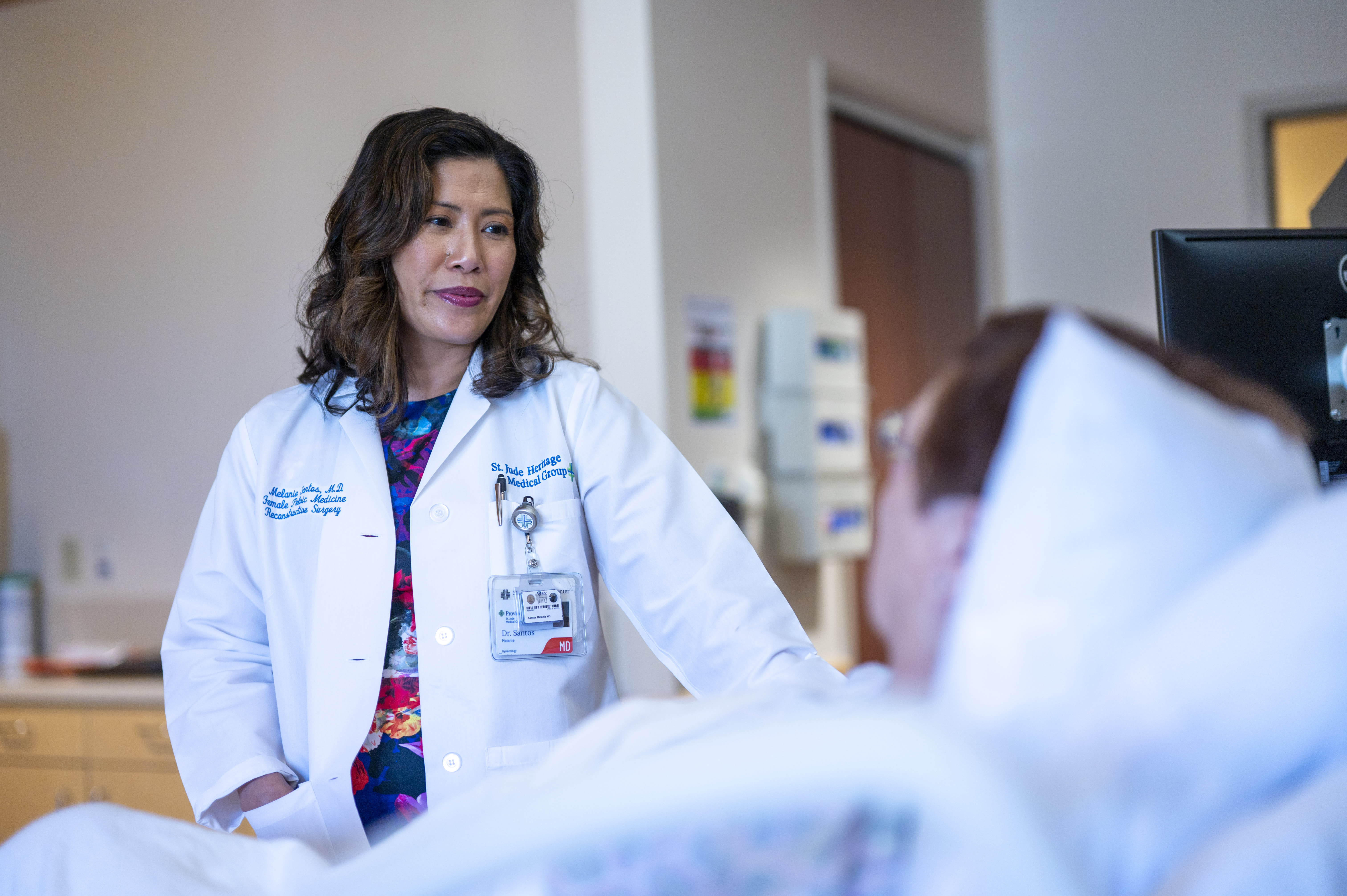Changing Neurosurgery One Advancement at a Time
Tumors and blood clots in deep-seated areas of the brain have long been considered inoperable, giving patients very few treatment options—and often little hope. Neurosurgeons at Providence St. Jude are redefining “inoperable,” while turning technically challenging surgeries into minimally invasive procedures.
Using advances in inter-operative imaging, neuro-navigation, and computer-guided surgery, the hospital’s neurosurgeons can access tumors and clots by navigating within the brain’s neural pathways—instead of simply cutting through them. The ability to visualize and maneuver within the narrow fiber corridors of the brain has dramatically minimized the impact of surgery on healthy brain tissue, reducing hospital stays and speeding recovery. Meanwhile, breakthroughs in computerized brain mapping and high-definition optics are allowing more thorough resection—a result directly tied to better patient outcomes.
“In the last few years, new technologies have allowed us to achieve more than incremental improvement,” explains Hector Ho, MD, a respected neurosurgeon at Providence St. Jude. “Fundamental new ways of approaching tumor resection have become possible.”
The cost of state-of-the-art surgical technologies as well as an often-steep learning curve for surgeons—typically requiring specialized training and certification—means most hospitals hesitate to incorporate technology-driven advances. At Providence St. Jude, a nationally recognized center of excellence in neurosurgery, these improvements are benefiting patients every day.
In fact, from the use of new fluorescing agents that “light up” a tumor to allow more complete resection to sophisticated real-time visualization capabilities, St. Jude is often among the first to bring evidence-based advances into daily practice. “There is a significant time commitment required to continuously learn new techniques while refining old ones, but it is a commitment our surgeons are eager to make,” explains Dr. Ho. “It’s about finding new and better answers for our patients.”
One of the latest additions to the hospital’s state of-art neurosurgical capabilities is NeuroBlate, which uses MRI-guided laser technology combined with robotics, temperature mapping, and sophisticated software to precisely kill cancer cells through heat. Real-time visualization allows surgeons to use the laser to destroy tumors deep within the brain without damaging the surrounding healthy tissue.
“It’s a game-changing advance, especially for aggressive and difficult-to-treat tumors,” explains Dr. Ho, who was spending weekends training on the use of laser ablation even before FDA approval of the technology. “A completely different way of treating cancer that is elevating outcomes while reducing complications and risks.” Depending upon the size of the tumor, removal can take as little as four or five minutes and because it’s far less invasive than other surgical options, patients typically go home the next day. Most importantly, for those who have been told their tumors are too risky to treat surgically or who haven’t responded to treatment, laser ablation can offer new hope.
In addition to neurosurgeons at the forefront of their field, the hospital’s Neuro-Oncology Program includes board-certified neurooncologists, medical oncologists, radiation oncologists, and one of Southern California’s largest teams of neuro-certified critical care physicians. To help with recovery, St. Jude is also home to one of the top neuro-rehabilitation programs in the nation.
“There’s an entire team in each patient’s corner,” explains Dr. Ho, who says the Crosson Cancer Institute’s innovative and comprehensive approach to improving cure rates extends from breakthroughs in immunotherapy to a unique list of emotional and psychological support services for those going through diagnosis and treatment. “The life-changing outcomes created here are the result of excellence at every point along the continuum.”
To find a neurosurgeon that is right for you, call 844-925-0944 or go to providence.org/doctors.



